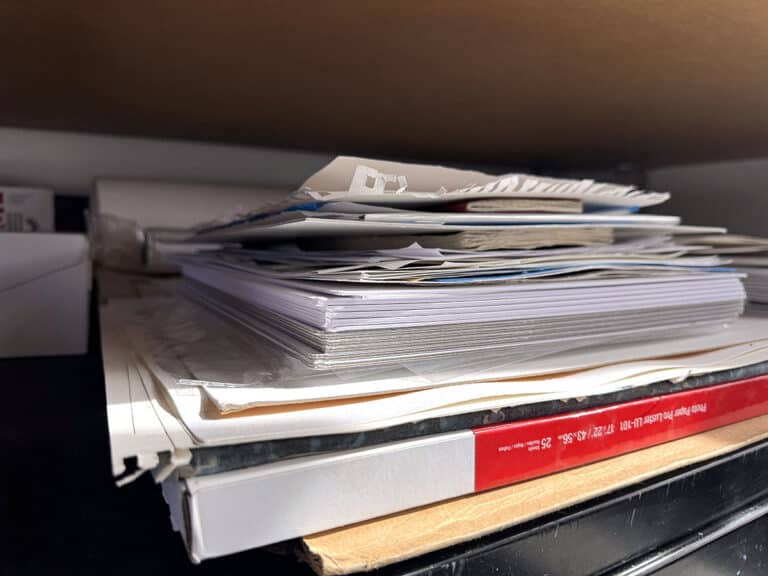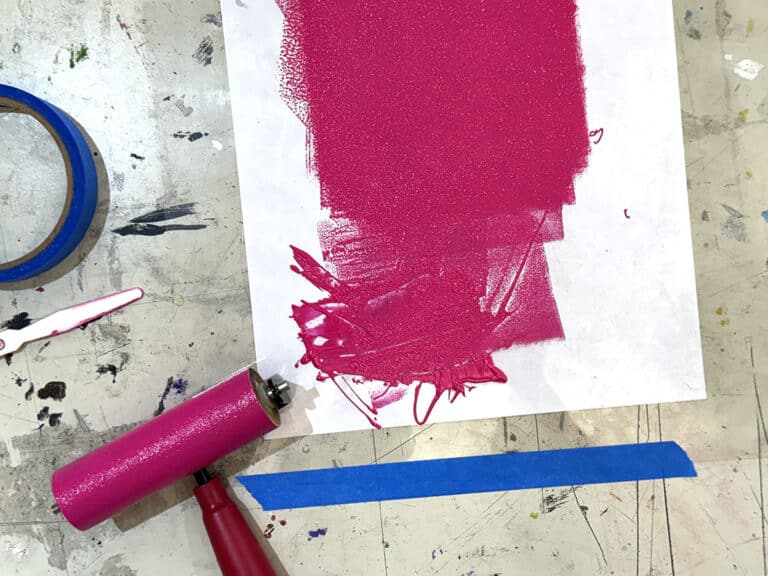There’s no question that art activates our human senses. Research shows the art experience is much more than visual. Whether creating or viewing art, it can evoke a multisensory response. Humans react differently to an artwork because individuals hold unique aesthetic experiences.
While art can provide a multisensory experience, certain conditions, like synesthesia, enable individuals to taste or hear colors.
Synesthesia is a neurological condition that causes the brain to process data in several senses at once.
While scientists don’t fully understand the condition, it can provide some unique conversation points and experiences in the art room. Let’s explore the topic a little deeper.
Different Types of Synesthesia
In the art realm, we most often think of synesthesia associated with color and sounds. While this might be the experience for some, there are several types of synesthesia. Scientists have not determined a concrete number of types, but they’ve seemed to settle on at least eighty. Here are a few of the most common types:
- Grapheme-Color Synesthesia: The most common and studied type. It’s characterized by written letters and numbers being associated with colors.
- Ordinal Linguistic Personification: This advanced type of synesthesia involves viewing ordered sequences, such as numbers, days, months, and letters with personalities and/or genders. For example, if one were to imagine the days of the week, each one would be visualized with an associated human trait.
- Chromesthesia: Described by the association between sound and color. It’s often seen as the experience of two or more senses acting simultaneously. A 1981 case study followed one art teachers’ experience with chromesthesia linking musical tone with color. She experiences high octaves as lighter color values, while lower octaves evoked a darker color value. Rapid major chord tone sequences appeared as rapid flashes of colors.

Artists with Synesthesia
Synesthesia is not as rare as people believe; studies show that sound 4% of the general population have different sensory experiences involving synesthesia. Many visual artists, musicians, and writers have been recognized as having various forms of synesthesia throughout history. Here are six visual artists you can share with your students who have variations of this condition.
Bringing Synesthesia Into the Art Room
Even though some research suggests all people possess synesthesia characteristics, many of our students won’t truly understand what this condition entails. While our students might not have diagnosed synesthesia forms, we can still teach and expose them to this phenomenal gift some artists experience. Here are some ideas:
1. Personal Color Palette
Bernadette Sheridan has grapheme-color synesthesia, where she sees letters and numbers as color. She describes her experience as most often associating colors when she hears the name of people. Because this was an experience she couldn’t explain concretely, she created the Synthesia.me project to help others visualize her experience. She created a name generator with each letter associated with the color she says. A user can type in their name and see what it looks like in color. The colors used in the generator come from Sheridan’s perception, but students can also enjoy the experience.

To take this activity a step further, you could have students create their own personal color palette with colors associated with symbols, letters, or numbers. Use the download below to get started.
2. Associating Colors with Sounds
Colors are often associated with moods and feelings. In the same way, sounds might evoke a certain feeling causing one to think of a sound. For instance, music that conveys anger might be associated with the color red. While this is not the same as chromesthesia, it can drive home the correlations between sounds and color. In a similar way of associating numbers and letters with color, colors can be assigned to sounds. Amy Kang created a painting series inspired by the musical scores of Johann Sebastian Bach. While not a synesthete, each paint stroke represents a key or chord with its assigned color. The result is a visual experience that shows the harmonious experience of music. Encouraging your students to explore one of their favorite songs, bands, or musicians could be an interesting way for students to experience this visualization of sound and color.
Watch Amy Kang’s process here.
3. Abstract Expressionism
Abstract expressionism is a term used to describe many of the works coming out of New York City in the mid-1940s and 1950s. This artwork style featured expressive marks, large blocks of color, spontaneous strokes, and emotional expression. While not entirely connected to synesthesia, the abstract expressionism movement allows for a wonderful sensory experience of colors, moods, and feelings to occur. In this day and age, where our students need to understand their feelings and emotions, abstract expressionism can be an outlet. One lesson example that explores this movement and the SEL needs of students is the Abstract Alpha lesson plan from our FLEX Curriculum. Here students create and assign symbols to letters; these expressive marks eventually create an abstract painting with a new visual language.

While synesthesia might be complicated to understand fully, students find it fascinating. Sensory experiences are powerful. Learning about and participating in multisensory activities involving sounds, colors, exploration, and imagination can create lasting experiences.
How do you teach your students about synesthesia?
What other ways do you expose students to the sensory experiences of art?
Magazine articles and podcasts are opinions of professional education contributors and do not necessarily represent the position of the Art of Education University (AOEU) or its academic offerings. Contributors use terms in the way they are most often talked about in the scope of their educational experiences.







